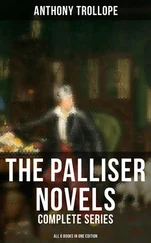There is nothing at all but ME! ”
When such verse as this—verse which utters sentiments, and expresses ideas, as radical and as advanced in line of Absolute Idealism as any philosophical concept mentioned in this book, not excepting the Vedantic idea—then are we not warranted in believing that the wind is blowing strongly from a certain quarter of the world of thought—are we not warranted in calling attention to the fact that the pot is bubbling very fiercely and that certain ingredients are appearing very frequently and forcibly upon the surface of the seething compound; and in believing that when the material is finally poured forth, and exposed after cooling, then the new thing will be strongly colored with Pantheistic Idealism?
Chapter XI.
New Thought, Theosophy and Christian Science.
Table of Content
AND NOW we are brought to a consideration of a phase of modern thought which has attracted much attention from observers of the “signs of the times.” This phase combines within itself the elements of religion, metaphysics and philosophy, although the orthodox authorities in each of these fields of thought will likely insist that the words “ quasi ” or “ pseudo ” be placed before each of these respective terms when so used. We allude to that peculiar manifestation of the modern mental and spiritual unrest which, under its manifold forms and names, may be generally termed the “New Thought.” It is true that we group under this heading several schools and sects which indignantly repudiate that particular term, but, nevertheless, we believe that the said term may be properly applied to all of this class of thought for the purpose of general classification, leaving the various elements to fight out for themselves which of them are orthodox and which otherwise. No other term applies so well to this particular manifestation of modern thought and speculation. It combines within itself the elements of many phases of theology, religion, metaphysics and philosophy, and yet is different from any and all of them. That is, the peculiar combination and application is different. “New Thought” is sui generis —unique—of its own kind. “ In itself” it is incapable of definition—it is known only through its various manifestations .”
In the first place, “New Thought” is new only in its present combination—its respective elements are as old as religious, metaphysical and philosophical thought. It represents a new turn of the kaleidoscope of speculation—the old elements are merely grouped in new form. Perhaps this idea may best be described by the apropos, although somewhat flippant, verses hereto appended, which have been going the round of the newspapers and magazines, including several devoted to the subject of “New Thought” itself. The author, whose name is unknown to me, breaks into descriptive verse as follows:
“Take a page of Epictetus and a Plato paragraph;
Shake it briskly till the mixture makes the gentle scoffers chaff.
Add a slight Socratic flavor, not in excess of a dram,
And a weak solution formed of Persian epigram.
Mix a bit from old Confucius and from Buddha several drops,
Add Egyptian lore found in the pyramid of great Cheops.
Now some truths not half remembered and some others half forgot.
Boil the mixture, boil it briskly, till it simmers in the pot;
And—Lord bless you now, my brother, and the skeptics all be—shrew
Can’t you see that you’re approaching the thought that’s labeled ‘New?’
• • • • • • • • • •
‘It is Thought,’ I said with rev’rence, much of which is very true,
But, if I do not displease you, what in thunder makes it New?’
Came the answer, ‘Lo! poor skeptic, hear the truth and doubt no more;
Such a mixture’s mixful mixing never has been mixed before.’”
Perhaps we may get a clearer idea of the nature of the “New Thought” if we will consider two of its leading direct sources, both of which, by the way, indignantly disclaim all relationship with, and inclusion in, the “New Thought.” These two direct sources, through which has flowed the older waters of many ancient schools of thought are, respectively, “Theosophy” and “Christian Science.”
“Theosophy,” in the modern application of the term, was a school of thought founded in 1875 by Helena Petrovna Blavatsky, the theories and teachings of which were promulgated by the Theosophical Society founded at that time. The Society has since had a varied experience, with several schisms and separations. Its teachings, however, have spread so far beyond its own organization that, today, “Theosophy” is regarded more as a general teaching than as the particular belief of the Society, or of its divided schools. The sources of the Theosophical doctrine are various, principal among which, however, are the teachings of the ancient Greek Mystics and the Buddhists, these two being ingeniously blended and commingled in the fundamental beliefs of the cult. The following “three fundamental propositions” of Theosophy are gleaned from the writings of the founder:
I. An omnipresent, eternal, boundless and immutable principle on which all speculation is impossible, since it transcends the power of human conception and could only be dwarfed by any human expression or similitude.
II. The eternity of the universe in toto as a boundless plane, periodically the playground of numberless universes incessantly manifesting and disappearing.
III. The fundamental identity of all souls with the universal OverSoul, the latter being itself an aspect of the unknown root; and the obligatory pilgrimage of every soul—a part of the OverSoul—through the cycle of incarnation in accordance with cyclic and karmic law, during the whole term. No privileges or special gifts are possessed by man save those won by his own Ego through personal effort and merit throughout a long series of reincarnations.
Upon this superstructure a great edifice of dogma and speculation has been built. Theosophy explains everything in the heavens above, the earth beneath, and the waters under the earth—to the satisfaction of its followers—all worked out in detail, and capable of diagraming and blackboard demonstration. Prominent in its teachings we find the detailed theories regarding clairvoyance, telepathy, second-sight, spirit-return, astral bodies, etc., and particularly the favorite New Thought doctrine that “thoughts are things,” and that it is possible to influence another by one’s projected thoughts, even though great distances intervene. The earlier Theosophical books, as well as the later, have many references to this power of thought, and the “New Thought” undoubtedly received many of its ideas on this subject, directly and indirectly, through Theosophy. Prentice Mulford, a writer of the early ’80’s, did much to popularize Theosophical ideas and conceptions, and was a direct connecting link between Theosophy and the “New Thought,” his favorite axiom: “Thoughts are Things,” having become quite a slogan of the latter. The Theosophical doctrine of reincarnation and Karma have found much favor among many of the followers of “New Thought,” although others reject it and favor the idea of a spiritual progression from plane to plane, higher and higher, toward the one divine principle. Its pantheistic ideas are also very apparent in many of the several cults of the “New Thought” movement. It must be noted, however, that Theosophy has had but little to say regarding “healing” of physical ills by mental and spiritual power—so the “New Thought” is not under obligations to it for this part of the latter’s working creed, this feature having been derived from other sources.
Читать дальше












